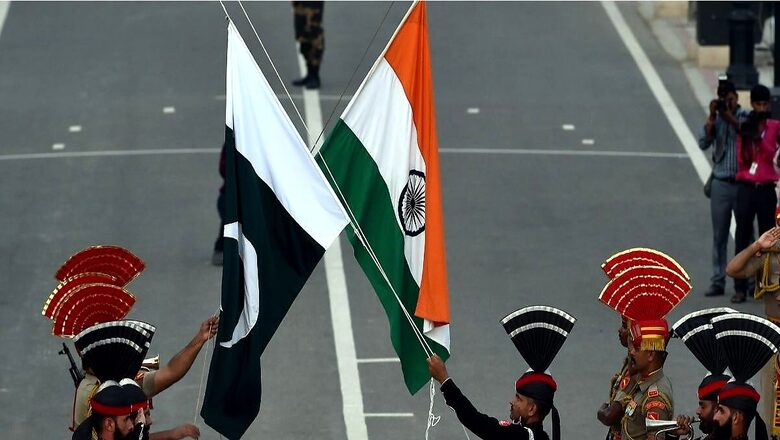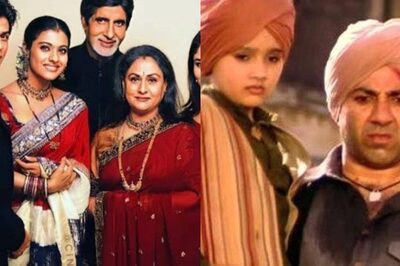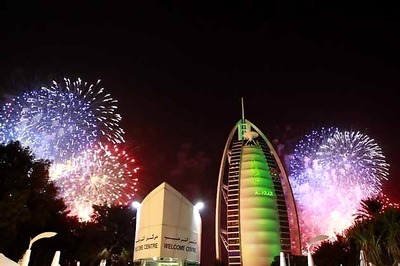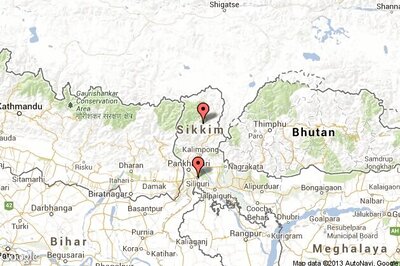
views
Pakistan has been a riddle — for India and the West. A nation that joined the Western bloc very early in its nationhood journey remained forever a self-proclaimed citadel of Islam. It fought the war against terrorism alongside the US-led alliance while simultaneously fathering the Taliban and other terrorist outfits. Maybe it was because of the nature of its origins wherein the worst of the Islamist forces were invoked. It may also be due to Pakistan’s aspiration to be the “Land of the Pure” — an ideal that could manifest itself only when everything, including time, travels back to seventh-century Arabia.
No one, however, is more befuddled by the idea of Pakistan than an Indian. To him, Pakistan remains a muddled notion, so contrasting and contradictory that even after seven decades of Partition and being at the receiving end of Islamabad’s three-and-a-half wars and decades-long terrorist activities, an Indian still is not sure if he would be better off with or without a strong, prosperous Pakistan!
Partly, it’s the result of the Hindu failure to comprehend the idea of the Abrahamic religions, especially Islam — and the Pakistani ingenuity at inventing its Arab roots. A Hindu, grown up with the pluralistic notions of ‘Vasudhaiva Kutumbakam’, often finds it difficult to believe the division of the world into the ummah and the kafir and a theological sanction for the perpetual damnation of the latter even when he had lived a near-perfect life! Pakistan is the physical manifestation of this Islamist mindset, which is constantly locked up in a civilisational battle with India.
What makes Pakistan dangerously anti-India is its paranoiac search for Arab roots. It disowns its indigenous history and invents another to suit the Islamist worldview. Thus Mohammed bin Qasim becomes the “first citizen of Pakistan” — the very invader from Arabia who killed, maimed and raped thousands of Sindhis in 712 AD. Everything before him is consciously forgotten. Everything after him is suitably distorted. Pakistan is today, in the words of VS Naipaul, “a dreadful mangling of history”, where “too much has to be ignored or angled” (Beyond Belief: Islamic Excursions Among the Converted Peoples).
Even the early Muslim campaigns have been used to bolster the morale of the Pakistan Army — one of the favourites being the Battle of Badr, where just over 300 Muslim men with no military training defeated 1,000 seasoned soldiers equipped with armour, 700 camels and 100 horses. It is this mindset that makes Pakistanis constantly challenge India. They think the Battle of Badr can be repeated.
What further makes Islamabad a perennial enemy is the Pakistan Army’s belief that “retaining the ability to challenge” New Delhi itself is victory. Elaborating on this, American author C Christine Fair writes in Fighting to the End: The Pakistan Army’s Way of War: “For Pakistan’s men on horseback, not winning, even repeatedly, is not the same thing as losing. But simply giving up and accepting the status quo and India’s supremacy, is, by definition, defeat… Pakistan’s generals would always prefer to take a calculated risk and be defeated than to do nothing at all.”
The second reason why the idea of Pakistan remains so baffling is because of the Pakistani tendency to keep personal and professional separate. So, an Indian visiting Lahore often comes back gushing about how his Pakistani hosts treated him with reverence! Professionally, however, India remains an enemy country. A new book, In Pursuit of Peace: India-Pakistan Relations under Six Prime Ministers, by the late Satinder Kumar Lambah, based on his own vast experience — as India’s High Commissioner and Deputy High Commissioner in Pakistan, as Joint Secretary (Pakistan and Afghanistan) and as Prime Minister Manmohan Singh’s special envoy involved in a long period of back-channel negotiations — brings out this dichotomy in so many instances.
Especially enlightening was the chapter, ‘Professional Engagement, Personal Interactions’, where Lambah recalls the first time he arrived in Islamabad as deputy chief of mission (1978-82). Gen Zia-ul-Haq was in power then. Zia had the image of an insecure, brutal and visibly paranoid dictator who Islamised Pakistan, brooked no dissent and banned music and other fine arts featuring women. But, as Lambah writes, his “traits of ruthlessness and deviousness were camouflaged with a display of humility and courteousness. His seeing off visitors to the car and discreetly placing a gift for them, usually a carpet, disarmed them and boosted egos”. He specifically mentions the story of George Fernandes, who had publicly said before his Pakistan visit that he would raise the issue of Benazir Bhutto with him, but “returned full of praise for the man”. At the meeting, Gen Zia reportedly told Fernandes: “Sir, I want to learn labour issues from you.”
Zia wasn’t alone in perfecting the art of two-facedness — a phenomenon which also manifested in the very psyche of the Pakistani state. Mohammed Ali Jinnah had led a personal life that would shame a Westerner, but that didn’t stop him from laying the foundation for an Islamic state. Then there was Zulfiqar Bhutto, a fervent socialist who officially made Pakistan an Islamic Republic and threw Ahmadiyyas out of the Islamic fold. His Western-educated, ‘liberal’ daughter, Benazir Bhutto, in her first term, invoked ‘jihad’ while calling for the liberation of Kashmir — and presided over the rise of Taliban 1.0 during her second term. Nawaz Sharif was no different either, though Lambah thought “he always wanted better relations with India”. Sharif was well aware of the Kargil plot even when he was welcoming Atal Bihari Vajpayee in Lahore. Sharif also instituted the death penalty for blasphemy, besides introducing the infamous Shari’ah Bill.
There are very few diplomats who can claim to have the expertise and experience of Pakistan that Lambah had. He was a sort of “Mr Pakistan” among Indian diplomats — the go-to person whenever the Government of India thought of initiating any dialogue process with Islamabad. He himself recalls an incident vindicating this image. While seeing him off as India’s envoy to Budapest in 1986, the then external affairs minister, PV Narasimha Rao, called him a “one-country (read Pakistan) man”. To this, Lambah replied: “Don’t say that loudly Sir as it’ll ruin my career.” Rao immediately made amends: “Loudly, I’d always say you are good for everywhere.”
No doubt, Lambah showed a great understanding of the nature of the Pakistani state. He writes, “Whereas Pakistan continues to derive the rationale for its existence to Islam, it has been able to sustain itself all these years through the creation of a bogey in the form of an Indian threat.” But this did not stop him from chasing the chimera of peaceful existence with Pakistan; in fact, he had been the most preferred diplomat to carry out this task on behalf of the Government of India. Maybe he was too close to Pakistan to see its real character. Maybe he was emotional too, given that he was born to an affluent Peshawar family in pre-Partition Pakistan.
Whatever it may be, the fact of the matter is that Pakistan occupies India’s — and Lambah’s — diplomatic mind space quite disproportionately. Every Prime Minister from Jawaharlal Nehru to Manmohan Singh would be swayed by the prospect of rewriting the India-Pakistan peace saga. Even Narendra Modi began his prime ministerial journey with a Pakistan overreach, but unlike others in the past, he mended his ways post-Pathankot, especially after the 2019 Pulwama terror attack. Such was the obsessive fascination for talks among the Indian leadership that there was a pattern: Every new government would push for talks with Pakistan. This would be followed by a terror strike of one hue or the other. The two nations would then talk tough for a few months, followed by a fresh round of dialogue. And Lambah would be the diplomat making the ground, especially since the 1980s.
For India, before 2016, when the Pathankot happened, talks had become an end in themselves! After all, where was the common ground between the two neighbours? India and Pakistan represent two contrasting ideologies — the two poles that can’t meet. What India glorifies are the dark ages (Jahiliyyah) for them. India’s heroes are invariably their villains, and vice versa. Is it, therefore, any surprise that Pakistan names its missiles after Qasim, Ghori and Ghazni? Is it any surprise that the era when the two nations were most enthusiastically involved in talks also coincided with some of the deadliest terror attacks — from Delhi and Ahmedabad to Varanasi and Mumbai, and not to forget Kargil where Vajpayee found himself soon after the Lahore bus diplomacy?
Lambah’s most momentous phase in the diplomatic arena came during Manmohan Singh’s time when he held back-channel interactions, from 2005 to 2014, with his Pakistani interlocutors to resolve the Jammu and Kashmir issue. After over 100 hours of talks across 18 meetings in different cities, Lambah came up with 14 “principles, prerequisites and outcomes”. Interestingly, President Musharraf had spelt out only four points. Besides demilitarisation, it laid down the roadmap to self-governance, joint India-Pakistan mechanism to oversee self-governance and trade and free movement of Kashmiris across the LoC. Given that India at that time was a witness to a series of terror incidents — and that 26/11 too was planned during Musharraf’s time — it was ludicrous not to see the dangers of demilitarising Kashmir or making the borders ‘irrelevant’! Gen Ashfaq Kayani, Musharraf’s successor in the army, shot this deal down, and India escaped a disaster of epic proportions.
Lambah makes us believe that there are two sets of people in Pakistan: one who seeks peace; and the other who forever works to undermine it. On a cursory level, this makes sense. But such is the nature of the Pakistani state that there cannot survive anyone who sincerely thinks of peaceful existence with India. Thus, Lambah may think Sharif was all for peace with India. But the truth is he was as much involved in Kargil as Gen Musharraf was. If Rajiv Dogra, who served as Consul General of India in Karachi from 1992 to 1994, is to be believed, Sharif not only knew about the 1993 Mumbai blasts in advance, but had actually given his approval for them (for more, read Dogra’s Where Borders Bleed). Lambah has been equally generous with Gen Musharraf and Benazir Bhutto. He is also soft on Inder Kumar Gujral, giving him a clean chit on the otherwise credible charges of ending R&AW’s operations in Pakistan.
Despite these shortcomings, Lambah’s In Pursuit of Peace is a must-read book — for its original content, firsthand anecdotes and deep dive into the Pakistani psyche. Very few had such access to the high and the might of Pakistan’s political class.
The author is Opinion Editor, Firstpost and News18. He tweets from @Utpal_Kumar1. Views expressed are personal.
Read all the Latest Opinions here



















Comments
0 comment